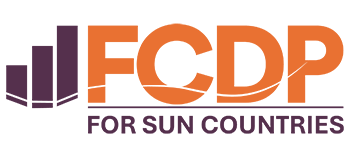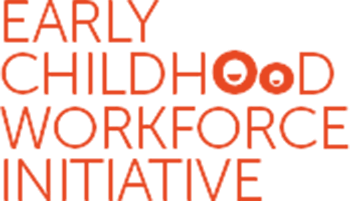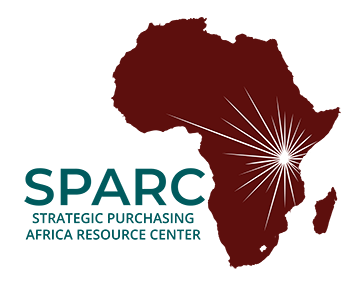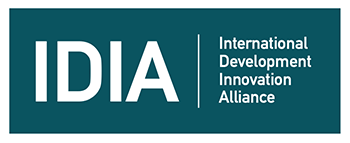An Analysis of India’s Newly-Released National Budget: Do the numbers add up when it comes to nutrition?
[Editor’s note: This is the second blog post in a series on nutrition financing in Rajasthan. The Results for Development Institute, with support from the Children’s Investment Fund Foundation (CIFF), analyzed budgetary allocations to nutrition in the Indian state of Rajasthan in a report released in February 2016. Read the first post on how India’s new budget, in light of devolution, affects funding for nutrition.]
Last week, the World Bank and International Monetary Fund kicked off their annual spring meetings in Washington D.C. to convene policy-makers and discuss future development strategies. Key among these attendees was India’s Finance Minister, Arun Jaitley, who was also in town to meet his American and Chinese counterparts. As Jaitley makes rounds in the Washington think tank circles discussing strategies to steer India towards growth, we hope increasing domestic investments in nutrition, an area where India has consistently lagged behind its neighbors, is one of his development priorities.
In late February, Indian Finance Minister Arun Jaitley presented the country’s central budget for 2016-17 and in March, the states held their budget deliberations. Despite powerful “pro-poor” rhetoric in Jaitley’s budget speech that indicated health and education were high on the government’s list of priorities, social sector allocations have only increased by 6 percent.
How much for nutrition?
Malnutrition is a widespread public health crisis in India — home to 191 million malnourished people, or 16 percent of its population. To put this in the global context, 35 percent of the world’s low birth weight infants and 43 percent of the world’s malnourished live in India.
The nutrition community was optimistic about the 2016-17 budget after India’s Chief Economic Advisor’s Office emphasized the importance of investing in maternal and child nutrition to maximize long-term growth in India in its Economic Survey. Unfortunately, the budget document does not mirror this commitment and nutrition is not mentioned even once.
Although disappointing, the absence of the word nutrition in the budget is not cause for despair. The Center for Budget and Governance Accountability estimated that 25,600 crore rupees (3.9 billion USD) have been budgeted for nutrition-specific interventions through centrally sponsored schemes (CSS) such as Integrated Child Development Services (ICDS) while 215,000 crore rupees (32 billion USD) have been budgeted for nutrition-sensitive interventions. Overall, nutrition allocations from the central government have increased by 1.4 percent (2015-16 RE to 2016-17 BE), which seems to be in line with the marginal increase experienced by most other social sector schemes.
Could there still be hope in the state budgets?
With increased devolution to states, marginal changes in social sector allocations (as depicted in the chart above) could have been expected since much of the expenditure for social sector programs should now theoretically be incurred at the state level.
More money is now being transferred to states as untied funds, and therefore central funding for centrally sponsored schemes has decreased. As a result, states should have greater freedom to set their own priorities and allocate accordingly. But, lower fund transfer for centrally sponsored schemes also means that the states are expected to give up a portion of their untied funds to continue to finance these schemes. Although exact numbers are hard to ascertain, budget experts believe that a significant fraction of state funding will therefore continue to be tied up for financing centrally sponsored schemes, leaving little room for additional investments.
Some may argue that the central government has reduced the number of centrally sponsored schemes from 72 to 30, thus lowering the burden on the states, but in reality the government has consolidated several schemes under larger umbrella schemes. Therefore, despite devolution, states may not really have much wiggle room to make customized state investments in the social sector and prioritize health and nutrition.
A closer look at the budget of one state: Rajasthan
The problem of malnutrition is especially severe in the state of Rajasthan, India’s largest state by area, where 36 percent of the children under 5 are developmentally stunted (low height-for-age) and 14 percent are wasted (low weight-for-height). Despite experiencing gradual improvements in its nutrition indicators over the past decade, rates of malnutrition in the state are higher than the national average.
Over the past year, Results for Development has been assessing current government spending on nutrition in Rajasthan and developing an estimate of resources required to scale up essential nutrition services. Naturally, this budget cycle, we were particularly interested in finding out what Rajasthan’s financial allocations to nutrition looks like in 2016-17.
As a champion of nutrition in the state, Chief Minister Vasundhara Raje has consistently voiced her commitment to improving nutritional outcomes in Rajasthan. This was most evident through the launch of the Community Management of Acute Malnutrition program late last year. However, even in a state like Rajashtan, which has strong political will to tackle its high malnutrition rates, funding for nutrition programs such as Community Management of Acute Malnutrition has declined from previous fiscal years.
Given the momentum and success of the Community Management of Acute Malnutrition pilot program in the state, we were disappointed to see funding levels decline from when the program was in its pilot phase. As Rajasthan’s health department begina to finalize their Program Implementation Plans, we can only hope that adequate funding is allocated to the Community Management of Acute Malnutrition program for a robust scale-up this year.
Funding for the Integrated Child Development Scheme in Rajasthan has also declined. At first glance, the outlook for nutrition in the state in 2016-17 is rather bleak.
Is more money the silver bullet?
In his 2014-15 budget speech, Jaitley emphasized that an intensive national program was required to improve the situation of malnutrition in India and that a comprehensive strategy including detailed methodology, timelines, measurable targets, and associated costs would be made available for implementation within the first six months of 2014-15. Two years later, we see almost nothing. So while it is disappointing that allocations to social sectors such as nutrition have only increased marginally, it is unlikely that funding alone will make a difference if it is not accompanied by a strong framework or a coherent strategy on how these funds can be effectively used to improve nutrition outcomes.
Social sector investments are often disrupted by late central releases to states or the incapacity of states to utilize their allocated budgets, yet not enough has been done to mitigate these issues. Unpredictability in central fund transfers makes state expenditure plans extremely volatile. Furthermore, even when these funds are released, states lack the capacity or are unable to spend this money on time. For instance, in the second quarter of FY 2015-16, Rajasthan had only spent 13 percent of its approved allocation for NHM compared to 34 percent in 2014-15 over the same time period — a 21-percentage point decline. This demonstrates that before allocating more money, both the central and state government need to carefully consider how existing allocations can be better used to improve health and nutrition outcomes, through quicker fund release and robust policies that facilitate higher fund utilization.
Looking forward: Restructuring India’s social policy framework
Despite its shortcomings, the 2016-17 budget brings with it a glimmer of hope.
Consolidating the number of centrally sponsored schemes, even in name, is hopefully an important first step towards phasing out ineffective social sector programs. This will free up some state resources to make investments in other areas.
The central government has also committed to conducting outcome reviews for existing centrally sponsored schemes, which will eventually lead to the phasing out of ineffective programs. These reviews may represent the beginning of an outcome-based financing model in India. Such a model could incentivize governments to design and implement programs that maximize health and nutrition outcomes. Global evidence shows that these types of models can successfully transform outcomes.
For instance, when Plan Nacer, an outcome-based financing health program for pregnant women and children was implemented in Argentina, large positive effects on birth outcomes were observed. A proposal to phase out Sarva Shiksha Abhiyan, India’s flagship education program, as it currently exists and replace it with an outcome-based financing model that links 20 percent of the education budget to outcomes is currently being circulated.
India has the opportunity to make significant improvements in nutrition and across myriad development areas, including water, sanitation and hygiene, health, and education. Could such an outcome-based financing model give India the push it requires to improve its stunting and wasting rates? Only time will tell but there is a large body of evidence supporting its implementation.
Photo © Karen Dias for CHMI/Swasth Health Clinic













